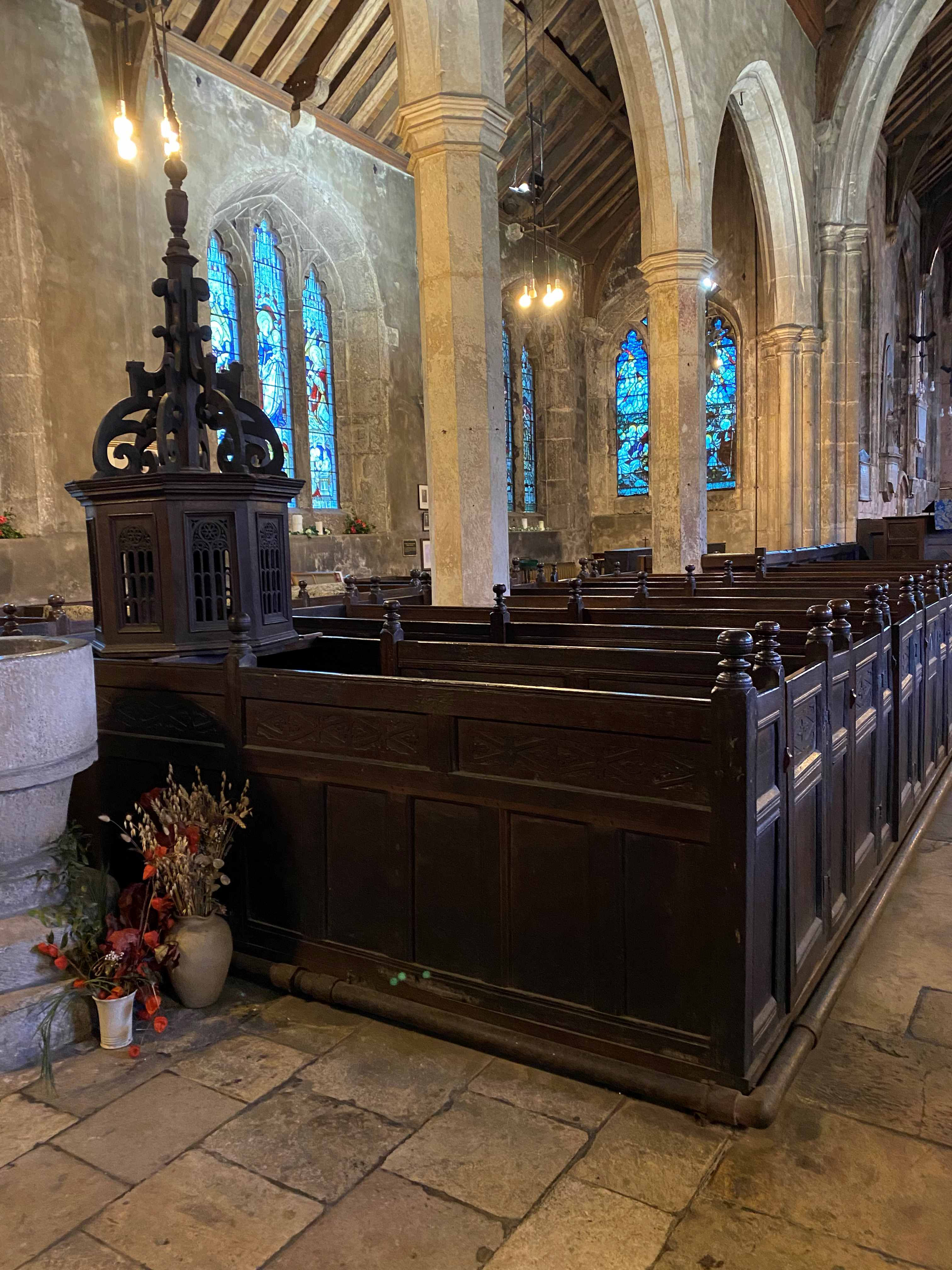Down little winding country lanes, midway between York and Tadcaster, lies the pretty village of Bolton Percy. Here the discerning visitor will find the magnificent church of All Saints, known locally as The Cathedral of the Ainstey. The present church dates from the C15th but was probably constructed on the site of an earlier Anglo Saxon building. The land around Bolton and the church was recorded in the Doomsday Book, the village then being granted to William de Percy and hence the change of name to Bolton Percy.
All Saints Church was consecrated in 1424 and is a wonderful example of church architecture in the Perpendicular Gothic Style. What makes this church so interesting and important is that the structure has not suffered from numerous alterations and additions. Apart from the addition of the stone porch, very little has changed since the church was originally built.
The church furnishings are extremely interesting and date from all different periods. The lovely wooden box pews were installed along with the small pulpit in the 1630s. There is also a very ornate wooden cover for the font dating from the same era. The candlesticks in the sanctuary and the hymn numbers box are the work of the “mouse man” from Kilburn, Robert Thompson, and date from the C20th. You can still see the little mice carved into the pieces which were the signature of this famous wood carver.
One of the glories of All Saints is the beautiful large east window. Although much restored it still contains some of the original C15th glass. The higher tier represents the company of heaven with all the saints and in pride of place the Virgin Mary and Christ Child. The lower tier shows figures of saints and archbishops linked to the north of England. In the North Aisle is an unusual depiction of the resurrection executed by the Victorian artist C.E. Kempe. You can see his signature, the wheat sheaf, in the left hand light. Immediately adjacent to this window is a wonderful example of the work of the pre-Raphaelite artist, Edward Burne Jones. The story in the glass depicts Charity with a child in her arms and two “waifs” sheltering within the folds of her dress. One of the most eye- catching windows is The Millennium Window, the work of the modern-day artist, Tom Denny. At first glance the window just appears to be a glorious array of abstract colours but on closer inspection you begin to discern birds, animals, fish and figures. It is a fun and joyous story of God’s creation of light and life.
One of the notable families associated with All Saints Church was the Fairfax Family. The monument dedicated to Ferdinando, 2nd Lord Fairfax, can be found in the South Aisle. Ferdinando was General of the Northern Forces on the side of the Parliamentarians during the Civil War. He commanded the troops at the Battle of Marston Moor in 1644 and defeated the Royalist Army led by Prince Rupert. His son, Thomas Fairfax, was also an important commander in the field. There is a plaque to Thomas in the Chapter House of York Minster thanking him for saving the cathedral and its beautiful stained glass windows from desecration and destruction.
Outside the church it is worth having look at the facade of the C15th timber framed gatehouse which originally led into the rectory. A short step across the street leads you into the delightful garden churchyard. Created by local horticulturalist, Roger Brook, it has been the subject of several television programmes including Gardeners World. This peaceful graveyard is covered in a profusion of garden plants and wild flowers which delight the eye throughout the year.
To round off your visit to this amazing village and church, drop into D’Oyleys Tea Room for a cup of tea and some home made cakes. ![]()
Article supplied by Jenny Denton, Blue Badge Tourist Guide – https://yorkshiresbestguides.co.uk/project/jenny-denton/
![]()


